- Clone
- W19195B (See other available formats)
- Regulatory Status
- RUO
- Other Names
- GATA-binding factor 3, trans-acting T-cell-specific transcription factor GATA-3
- Isotype
- Rat IgG2a, κ
- Ave. Rating
- Submit a Review
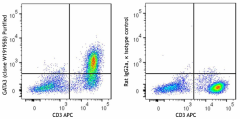
| Cat # | Size | Price | Quantity Check Availability | Save | ||
|---|---|---|---|---|---|---|
| 386902 | 100 µg | 304€ | ||||
GATA3 functions as a major regulator of T helper 2 (Th2) cell differentiation in immune cells. GATA3 expression is upregulated through IL-4 receptor signaling or the Notch-mediated pathway, which results in production of IL-4, IL-5, and IL-13 cytokines. This is responsible for the preferential differentiation of Th2-cells. GATA3 has been shown to regulate early developmental processes of T cells, such as T cell commitment, positive selection, and post-commitment CD4+ T cell survival. In the mammary gland, GATA3 plays an important role in differentiation and commitment of luminal epithelial cells. In a mouse model, exogenous expression of GATA3 in undifferentiated breast carcinoma cells induces differentiation and suppresses spreading of the tumor cells, suggesting that GATA3 is involved in preventing malignancy of breast cancer. GATA3 has been reported to be essential in the development of a variety of normal tissues. Defects in GATA3 result in hypoparathyroidism, sensorineural deafness, and renal dysplasia (HDR syndrome).
Product DetailsProduct Details
- Verified Reactivity
- Human, Mouse
- Antibody Type
- Monoclonal
- Host Species
- Rat
- Immunogen
- Partial human GATA3 recombinant protein (1-258 aa)
- Formulation
- Phosphate-buffered solution, pH 7.2, containing 0.09% sodium azide
- Preparation
- The antibody was purified by affinity chromatography.
- Concentration
- 0.5 mg/mL
- Storage & Handling
- The antibody solution should be stored undiluted between 2°C and 8°C.
- Application
-
ICFC - Quality tested
- Recommended Usage
-
Each lot of this antibody is quality control tested by intracellular immunofluorescent staining with flow cytometric analysis. For flow cytometric staining, the suggested use of this reagent is ≤ 0.5 µg per million cells in 100 µL volume. It is recommended that the reagent be titrated for optimal performance for each application.
- Application Notes
-
Clone W19195B does not block 16E10A23, TWAJ, or L50-823.
- RRID
-
AB_2941570 (BioLegend Cat. No. 386902)
Antigen Details
- Structure
- 48 kD protein containing two GATA-type zinc finger domains responsible for DNA binding and two trans-activating domains at N-terminus
- Distribution
-
Nucleus
- Function
- GATA3, a transcriptional activator, binds to a consensus DNA sequence 5'-(A/T) GATA(A/G)-3' in the promoter region of genes, regulates T cell development, TH2 cell differentiation, and luminal cell proliferation
- Interaction
- Interacts with Smad3, FOG1, FOG2, and PU.1
- Biology Area
- Cell Biology, Chromatin Remodeling/Epigenetics, Immunology, Signal Transduction, Transcription Factors
- Molecular Family
- Nuclear Markers
- Antigen References
-
- Yagi R, et al. 2011. Int Immunol. 23:415-20.
- Chou J, et al. 2010. J Cell Physiol. 222:42-9.
- Ho IC, et al. 2009. Nat Rev Immunol. 9:125-35.
- Rothenberg EV, et al. 2008. Semin Immunol. 20:236-46.
- Kouros-Mehr H, et al. 2008. Curr Opin Cell Biol. 20:164-70.
- Van Esch H, et al. 2000. Nature. 406:419-22.
- Gene ID
- 2625 View all products for this Gene ID
- UniProt
- View information about GATA3 on UniProt.org
Related FAQs
Other Formats
View All GATA3 Reagents Request Custom Conjugation| Description | Clone | Applications |
|---|---|---|
| Purified anti-GATA3 | W19195B | ICFC |
| PE anti-GATA3 | W19195B | ICFC |
| APC/Fire™ 750 anti-GATA3 | W19195B | ICFC |
| APC anti-GATA3 | W19195B | ICFC |
| PerCP/Cyanine5.5 anti-GATA3 | W19195B | ICFC |
| Brilliant Violet 421™ anti-GATA3 | W19195B | ICFC |
Compare Data Across All Formats
This data display is provided for general comparisons between formats.
Your actual data may vary due to variations in samples, target cells, instruments and their settings, staining conditions, and other factors.
If you need assistance with selecting the best format contact our expert technical support team.
-
Purified anti-GATA3

Th2 polarized human peripheral blood lymphocytes were treate... 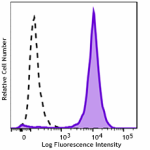
Murine Th2 cell line D10.G4.1 was treated with True-Nuclear™... -
PE anti-GATA3

Th2 polarized Human peripheral blood lymphocytes were surfac... 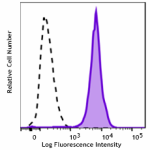
Murine Th2 cell line D10.G4.1 was fixed and permeabilized wi... -
APC/Fire™ 750 anti-GATA3
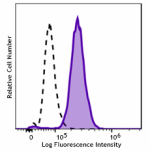
Murine Th2 cell line D10.G4.1 was fixed and permeabilized wi... 
Th2 polarized human peripheral blood lymphocytes were surfac... -
APC anti-GATA3

Murine Th2 cell line D10.G4.1 was fixed and permeabilized wi... 
Th2 polarized human peripheral blood lymphocytes were surfac... -
PerCP/Cyanine5.5 anti-GATA3
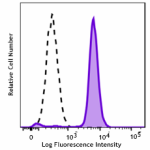
Murine Th2 cell line D10.G4.1 was fixed and permeabilized wi... 
Th2 polarized human peripheral blood lymphocytes were surfac... -
Brilliant Violet 421™ anti-GATA3

Murine Th2 cell line D10.G4.1 was fixed and permeabilized wi... 
Th2 polarized human peripheral blood lymphocytes were surfac...

 Login / Register
Login / Register 











Follow Us